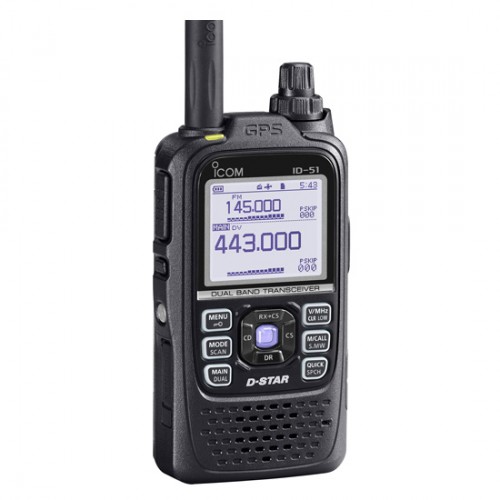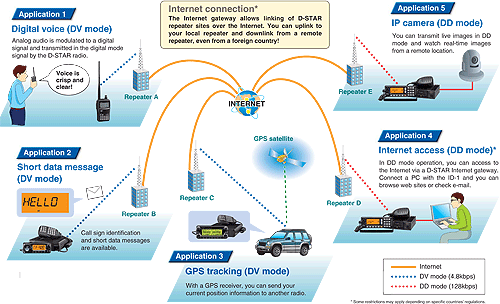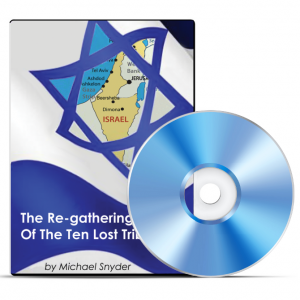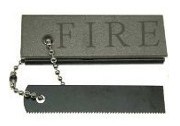Why communicate at all?
And you shall know the truth, and the truth shall make you free. John 8:32
For our safety, edification, and survival we need to know what is happening and what to do about it. As the plethora of prepper blogs and forums reveal, preppers have a lot to say—much of it informative, enlightening, and insightful and some of it disinformation, illogical, unmitigated drivel, and even evil. We need to screen the nuggets from the waste. Logic, critical analysis, and a well-formed conscience help us do that.
Even now, before events have hit nadir, we avoid controlled media. At best, mass media is useless; at worst, it is destructive to mind, body, and soul. What mass media provides is not news or information, but diversions, disinformation, outright lies, smut, and hasbara. Thinking people have come to depend upon the “alternative media” of the internet, but, when times get worse, the internet “kill switch” will deprive us of that source. We will be “in the dark” unless we build alternative means and networks. Better to build now than during a crisis. Amateur radio, “ham radio,” is one way to build friendships and networks now, before catastrophe peaks.
While preppers lean towards individualism, no single man, no single family can acquire all the necessary skills to thrive or even survive long term. No single man, no single family can rebuild a decent society. Very few amongst us can afford to acquire in advance all the “stuff” needed to thrive and survive. When times get worse how are the decent people to share their resources, offer their skills, communicate their needs, barter for resources that are not locally available, provide real time eyewitness news, and coordinate their good works? Want to reach a loved one when the cell system is overloaded or shut down? Use a ham radio.
Community and hence communication are essential to the good task before us. We cannot replace the diabolical command and control structure or drain the “elite’s” global cesspool unless we communicate with each other to build a decent and just society. You can be sure that our self-appointed “Masters” and their puppets and enforcers will do their worst to oppose us. We need a leg up on them.
Amateur radio is one communication tool available to us all. My intent here is only to introduce the most basic information about ham radio to the uninitiated. This brief column is not intended to provide a comprehensive compendium of technical definitions, formulae, physics, esoterica, ham slang, procedures, equipment choices, or to delineate the astonishing variety of amateur radio disciplines and niches, but only to motivate you if you are not yet a ‘ham.’
Simple foundational concepts
Amateur radio always involves some mention of wavelength and frequency, but these concepts are easy to visualize. For our purposes here, think of radio waves as ocean waves. The distance from wave peak to wave peak (or trough to trough) is “wavelength.” The longer the wavelength, the fewer waves touch the beach per minute (or second). The longer the wavelength, the lower the frequency; The shorter the wavelength, the higher the frequency—the first key concept.
Picture Credit- http://salem.k12.va.us/staff/sjones/chemweb/electron/waves.gif
In the radio spectrum, longer wavelengths (lower frequencies) “bounce” better than shorter wavelengths (higher frequencies). These longer wavelengths can be bounced off the ground, off layers of the atmosphere, or even off the moon. The ever-changing activity of the sun (day, night, sunspots) makes an enormous difference in the electrical charges in the ionosphere and so significantly affects how well the longer wavelengths “bounce,” “propagate,” how far they “go.” Shorter wavelengths (higher frequency) do not “bounce” so well and so are limited to line-of-sight propagation. Since those longer wavelengths can bounce farther than you can see, those longer wavelengths communicate farther than line-of-sight—the second key concept.

Picture Credit- http://www.ips.gov.au/Images/Educational/Other%20Topics/Radio%20Communication/typeofHFpropagation.png
For our purposes here, we refer to the longer “bouncy” wavelengths as high frequency (HF) and the “line-of sight” shorter wavelengths as very high frequency (VHF) and ultra high frequency (UHF). Radio wavelengths are usually expressed in meters or fractions of meters. Radio frequencies are usually expressed in “per second” or “Hertz” (abbreviated “Hz”) or “millions per second” (megahertz, MHz) or even “billions per second” (gigahertz, GHz).
So, the ham radio spectrum looks like this:
HF 3 to 30 MHz
VHF 30 MHz to 300 MHz
UHF 300 MHz to 3,000 MHz (3 GHz).
All this means is that 3.750 MHz in the 80 meter HF band “bounces” better than 144.500 MHz in the 2 meter VHF band. You’ll get used to it. These concepts will quickly become second nature for you. Suffice it to say, if you want to communicate over long distances, you will want access to those “bouncy” HF bands.
Why Get Licensed?
Why? To get connected with good people of like mind. To legally operate an amateur radio now, you must be tested, licensed and you must provide an address; a private mailbox or PO Box suffices. Though such government-imposed requirements are repugnant to many, here is why you should start now—to practice important skills that will be very useful later. If you only want to talk to your buddy a few miles away, it is almost as easy to use an amateur radio as a CB radio, but to succeed in regional, transcontinental, or worldwide radio communication requires skills born of practice. If you think you can simply turn on a ham radio and send or receive real time news regionally or globally, you are sorely mistaken.
There are tools today that allow a novice to very easily use an inexpensive handheld radio to talk to other hams around the world, but this capability depends on internet digital linking. When the internet kill switch is used, there will be no more D-STAR (Digital Smart Technologies for Amateur Radio) or IRLP (Internet Radio Linking Project). When the chips are down, you will have only: (1) the short-range line-of-sight capability of VHF and UHF radio and (2) the long-range “bounce” of HF radio. While those short-range line-of-sight VHF/UHF skills are easily acquired, be sure that “DXing,” slang for making long-range contacts, requires special HF radios, more skill, more power, better antennas, and practice.
More than local news will be necessary for you to get “the big picture,” so I urge you to get your license and equipment now and start practicing. You cannot be an effective sniper with your first round and you cannot be an effective DXer with your first “QSO,” slang for “radio contact.”
Currently there are three levels of ham licenses being issued by the Federal Communications Commission (FCC): from low to high, Technician, General, and Extra. Each higher level allows more access to bandwidth, more frequencies to use. Morse code is NOT required for any class of ham license. The Technician license exam is very easy. A Technician license gives access to the relatively short-range VHF and UHF bands, but gives none of the HF access necessary for long-range communication. The General license exam is easy, only slightly more difficult than the Technician exam, and a General license allows you to legally enter the long distance world of DXing on HF. A General license is well worth the small increment of effort. The Extra licensing exam is difficult for most, but the Extra license gives access to all the frequencies legally allowed to hams.
Indeed there are many laws currently regulating ham radio usage and I urge you to learn and obey them. Practice, practice, practice… ahem… legally. Let us not review how resistance movements have used clandestine radios against the control grid.
There are two styles of study for the exams. One may simply study to pass the exam or one may study to master the information. You may choose to do both.
Gordon West has a series of books seemingly aimed at passing the exams. The first in the series is Technician Class 2010-2014.
ARRL, the American Radio Relay League, has a series of books and webpages seemingly aimed at mastering the material. The first in the series is Ham Radio License Manual Revised 2nd Edition. In far more detail than I can do here, the ARRL website provides an overview and resources for many aspects and specialty niches of ham radio, niches like “fast scan amateur TV” mentioned below. With little effort on the ARRL website’s Find A Club page, you can find a local ham club. Most clubs have training classes and members willing to be your personal ham radio mentor, in ham slang, your “Elmer.”
There are even websites dedicated to helping children obtain their licenses. For example: Licenses –Self Study Program
Some Facts, Some Gear
Radio “bands” are named by their wavelength or frequency, so because of the relationship between wavelength (abbreviated by the Greek lower case lambda, λ) and frequency (abbreviated by the Greek lower case nu, ν), the “40 meter band” is the same as the “7 MHz band.” As I hinted above, the reciprocal mathematical relationship of wavelength and frequency is quite simple: wavelength (λ) = speed of light (c)/frequency (ν).
Check out this graphic here to get an idea.
The allocation of frequencies to bureaucratic, military, commercial, and amateur users is agreed through international treaties that are enforced by national agencies. The “band plan” for US amateurs includes access to band segments from 160 meters (1.8-2.0 MHz) to 33 centimeters (902-928 MHz), covering quite an enormous expanse of the electromagnetic spectrum. Perhaps the amateur frequency allocations are best appreciated graphically.
Picture Credit- http://www.arrl.org/images/view/Regulatory_/Color_Band_Chart_Image_1.jpg
Ham “transceivers” both transmit and receive various radio bands. Radios range in price and functionality from utilitarian $100 handhelds to do-everything desktop behemoths costing thousands of dollars. Amplifiers and ancillary equipment increase range and functionality as they also add cost. You decide your budget. A small hand held transceiver, called “HT” for short, will commonly allow transmission and reception on VHF and UHF bands. Many ham HT’s also receive, but do not transmit HF, aviation bands, marine bands, and commercial AM and FM stations.
Opinions vary and tastes differ and there are certainly less expensive options, but I recommend the full feature Yaesu VX-8DR and ICOM ID-51A radios. Do not be perplexed or overwhelmed by product specifications as listed in brochures and reviews. The meaning of these specifications will become crystal clear as you study for your exam and use your own radio. Computer software and cables are available that allow you to program and clone the memories and setting of such radios more easily than tapping every memory and setting into the radio using the radios’ tiny buttons. RT Systems is among the most respected purveyors of such software. That Yaesu model has broader band access than that ICOM model, but does not have D-STAR or built-in GPS. The ICOM does have both D-STAR and built-in GPS (Global Positioning System), hence easy global access now using VHF/UHF (no HF), but, as I mentioned above, those global VHF/UHF capabilities are easily shutdown at the whim of “our” police state.
Also, there may be circumstances where you might not want to automatically report your GPS location, so you might deactivate or not install such options. The ICOM ID-51A’s automatic GPS does allow automatic connection to nearby repeaters and reflectors (see below), a convenience, but you may choose instead to manually enter such information if needed. The line-of-sight range of these tiny 5 watt HT’s can be markedly improved, even to 50 miles, by connecting through suitable coaxial cable to a simple, inexpensive, and unobtrusive magnet mount antenna at home or on your vehicle. To help protect against EMP damage, our family keeps our HT radios in Faraday bags.

ID–51A VHF / UHF Dual Band Transceiver – Features – Icom America
Vehicle mounted mobile transceivers markedly expand your range and bandwidth. 100-Watt mobile transceivers are common and many add HF capabilities to VHF and UHF. The very newest mobile radios, such as the touchscreen ICOM 7100, reviewed here at eham.net, include both HF and D-STAR as well as GPS capabilities if you activate it. 1,500-Watt amplifiers are optional and refined tunable antennas are available. Such units give you the best of local and worldwide digital radio now and analog radio when the internet has been killed.

IC-7100 HF/VHF/UHF Transceiver – Features – Icom America
For the dedicated, practiced, and affluent ham with a “ham shack,” a 1,500-Watt desktop behemoth (for example, an amplified Kenwood TS-990S) carefully grounded and coupled to a skyful of specialized antennas is the pinnacle of amateur radio capabilities, but is far from portable. There are, of course, competing models such as the ICOM 9100, reviewed here at QST, a ham website and magazine, and here at eham.net. At about a third of the Kenwood TS-990S’s price, expect fewer features and slightly less capability. Your shopping philosophy may differ, but for firearms, optics, and tech gear, I believe, “Buy once, cry once.”

Whatever you choose, be sure to consider and purchase backup power sources for your radios—rechargeable batteries, solar chargers, generators, and even your vehicles’ batteries.
Ham Radio Outlet is one of the better-known suppliers of new and used equipment, but local and regional “hamfests” usually have swap meets. Experienced hams looking to upgrade their equipment often offer a variety of excellent used equipment at great prices though usually without warranties.
It is possible—and legal for licensed hams—to communicate through repeaters linked to a home computer without using any radio at all, even using a computer with a “dongle,” a device that allows access to D-STAR—but why? My purpose here is to motivate readers to have radio capability when the banksters’ police state murders the internet.
How It Works
Hams may communicate from radio to radio using “simplex,” taking turns to transmit and receive on the same frequency, but most VHF and UHF communication currently uses “duplex,” using two different frequencies “offset” for transmitting and receiving and often activated by subaudible “tones” through “repeaters.” Repeaters are powerful radios that, because of their prominent placement on moutaintops or tall buildings facilitate wider range communication than would be allowed by less powerful radios at ground level that are more easily blocked from line-of-sight by terrain or other obstructions. Small 5 watt HTs, may only have a useful range of 2-5 miles when communicating to another ground-level HT, but can have a useful range of 50 miles or more when using a 1,500-watt repeater on a mountaintop to relay the signal. HF and D-STAR communication always use simplex. D-STAR “reflectors” link by the internet to other reflectors around the world allowing 5 watt HTs to talk to people around the world. Reflectors and repeaters can be selectively linked for user-defined networks, but repeaters, reflectors, and linking will likely be unavailable when the internet is down.
Groups of hams with common interests meet on air for scheduled chats, called “nets.” You can form a “net” to meet others who share your particular interests. You can share computer files, photos, videos, and location information—locally or globally.
Picture Credit- http://www.icomamerica.com/en/products/amateur/dstar/dstar/dstar_examples.gif
Privacy
Who has privacy? It is illegal to encrypt or encode amateur radio transmissions (business and government users may encrypt transmissions) and openly broadcasting allows anyone and everyone with a receiver to hear what you say. That is the diametric opposite of privacy—or is it? The amateur bands range from 1.8 to 3,000 MHz. That is a lot of territory available to “hide in plain sight.” Be sure too that there will be times when you want everyone to hear what you have to say.
I urge you to remain lawful and to abide by the millions of laws that control us, but do note this reality, presented here only as points of information, NOT encouragement—Besides the paid enforcers, there are obnoxious unpaid busybodies (as pathologically intrusive as Homeowner Association busybodies) who snoop the airwaves to detect and report even innocent regulation violations to the FCC, but it takes considerable dedication of expensive resources to DF (Direction Find) locate an offender, especially a mobile freedom fighter who illegally does not use his unique call sign and who uses brief simplex (transmit and receive on the same frequency) burst transmissions. Encrypted transmissions sound like static and technologies like spread spectrum are hard to detect and track, explaining in part why the military and the police state use such technologies themselves. Every radio has unique electrical idiosyncrasies that are an unavoidable electronic “signature.” Just like firing pin, chamber, and barrel impressions on a primer, case, or bullet “fingerprints” a firearm, your radio’s electronic signature “fingerprints” every transmission from your radio, but such identification takes sophisticated equipment, trained analysts, the time and will power to dedicate the necessary resources to catch offenders, and the authorities must have your radio in hand to match the on-air fingerprint to you and your radio. Simply because those difficulties exist, do NOT abuse your license privileges. I reiterate, remain courteous and legal.
A Last Word
A loved one is dying, you are injured, your children are starving, and your home is under attack. Who are you going to call? HOW are you going to call?
A last word, food for thought. One niche in ham radio is analog TV. Yes, you can send your own amateur analog videos by ham radio, fast scan Amateur Television (ATV). The world had little knowledge of and less sympathy for the genocide of the Palestinian people until photos and video showed the horrifying tortures heaped on innocent Palestinian men, women, and children by perpetrators who perennially pose as victims. Images opened the eyes of the world, even here in the USA where the perpetrators and their accomplices control the media and own “our” legislators.
In the same vein, do you remember how the American KGB kept reporters miles away from the Branch Davidians? Imagine how different the outcome at Waco if the Branch Davidians had transmitted to the world video footage of the attacks and tortures heaped upon them by the uniformed psychopaths. Imagine if the world had seen in real time what the FBI’s own FLIR footage documented, arson and murder under color of authority revealed too late in the documentary Waco: A New Revelation—that psychopaths dismounted from an Army tank to set fire to the Davidians’ home and then machine-gunned men, women, and children as they attempted to flee the government arsonists. Yes, imagine what the world will do to such perpetrators when evidentiary video escapes the control of the gatekeepers. Document and distribute what you see. Talk to each other, my friends.
Nuremberg 2—Punish ALL the guilty; leave the innocent alone. Help it happen.













